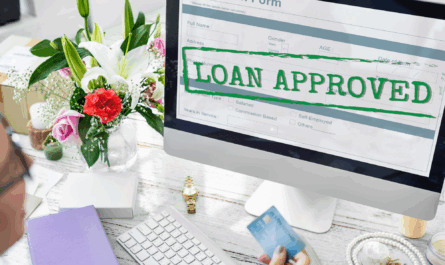Personal loans can be a great way to finance various expenses, from home renovations to medical bills. However, once you take out a personal loan, you’ll need to pay it back, with interest. To make the repayment process more manageable, some lenders offer partial payment options on their personal loans. In this article, we will explain what partial payments on personal loans are, their advantages and disadvantages, how they work, and what you should consider before making a partial payment.
What is Part Pre-Payment of a Personal Loan?
Partial payments on personal loans are a form of prepayment, where borrowers can pay off a portion of their loan before the scheduled due date. These partial payments can be made in addition to the regular monthly payments or in place of them.
Partial payments on personal loans work by reducing the principal balance of the loan. When you make a partial payment, the amount you pay is applied towards the principal balance, rather than towards the interest charges. This can help reduce the amount of interest you owe over the life of the loan, which can, in turn, help you save money.
Related read: Personal loan prepayment
Penalty on Partial Prepayment of Personal Loan?
Most lenders charge a prepayment or foreclosure fee for closing off or making a partial payment for a personal loan. The fee differs for every lender. Some lenders may offer partial payment options without charging any fees, while others may require a fee or penalty for early repayment.
Partial Payment Calculator
If you are planning to make a partial payment for your personal loan, you need to calculate the fee beforehand to check if early payment is feasible for you or not. You can use any partial payment calculator online to know the exact amount you will be charged by the lender. Most of the times, your lender’s official website will have a partial payment calculator for your reference. You will just have to enter the loan amount and the prepayment amount to calculate the partial payment fee.
So, if you are considering a partial repayment, here are a few things to consider before making a decision.
Is it good to do the partial payment of Personal Loan?
Before making a partial repayment on your personal loan, there are a few things you should consider. First, you should check with your lender to see if there are any fees or penalties associated with early repayment. You should also consider whether making a partial payment will actually save you money in the long run, or if it will simply reduce the amount of your monthly payments.
Another thing to consider is whether you have the financial means to make a partial payment. While making additional payments can help you save money, it’s important to make sure that you’re not putting yourself in a financially precarious situation by doing so.
Advantages of Partial Payments on Personal Loans
- Save money on interest
- Reduce the Interest amount
- Pay loans faster
- Reduce Loan tenure
- More flexibility
One of the main advantages of partial payments on personal loans is that they can help borrowers save money on interest charges. By making additional payments towards the principal balance of the loan, borrowers can reduce the amount of interest they owe over the life of the loan. This can also help borrowers pay off their loans faster, as the additional payments can help reduce the total amount of time it takes to pay off the loan.
Another advantage of partial payments on personal loans is that they can provide borrowers with more flexibility in their repayment options. If a flexible repayment plan is something you are looking for, Airtel Flexi Credit should be your choice. You can get a loan up to Rs. 9 Lacs with a flexible EMI plan and loan tenure.
By making additional payments, borrowers can choose to pay off their loans early, or simply reduce the amount of their monthly payments. This can be particularly helpful for borrowers with fluctuating income or other financial obligations.
Disadvantages of Partial Payments on Personal Loans
- Penalty fee for early repayment
- Prepayment plan not available on all personal loans
- Limited options
While partial payments on personal loans can offer many advantages, there are also some potential disadvantages to consider. One of the main disadvantages is that some lenders may charge fees or penalties for early repayment. These fees can offset any potential savings from making partial payments, so it’s important to read the terms and conditions of your loan carefully before making any additional payments.
Another potential disadvantage of partial payments is that they may not be available on all personal loans. Some lenders may only offer partial payment options on certain types of loans, or only to borrowers with good credit scores. This can limit your options if you’re looking to make additional payments towards your loan.
Conclusion
Partial payments on personal loans can be a great way to save money on interest charges and pay off your loan faster. However, it’s important to carefully consider the terms and conditions of your loan, as well as your own financial situation, before making any additional payments. By following the tips outlined in this article, you can make the most of partial payments on your personal loan and achieve your financial goals.
Also read: What is the maximum and minimum tenure for a personal loan?



